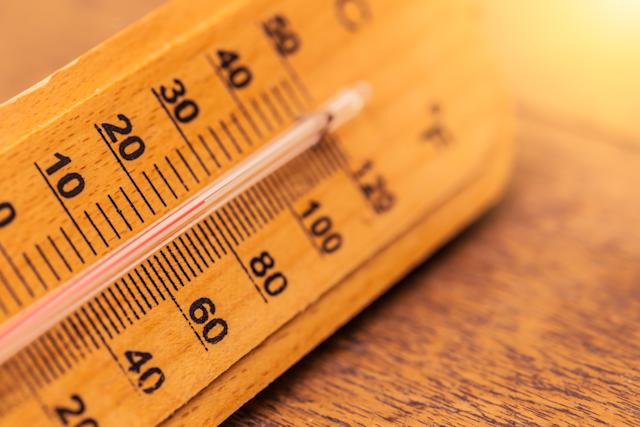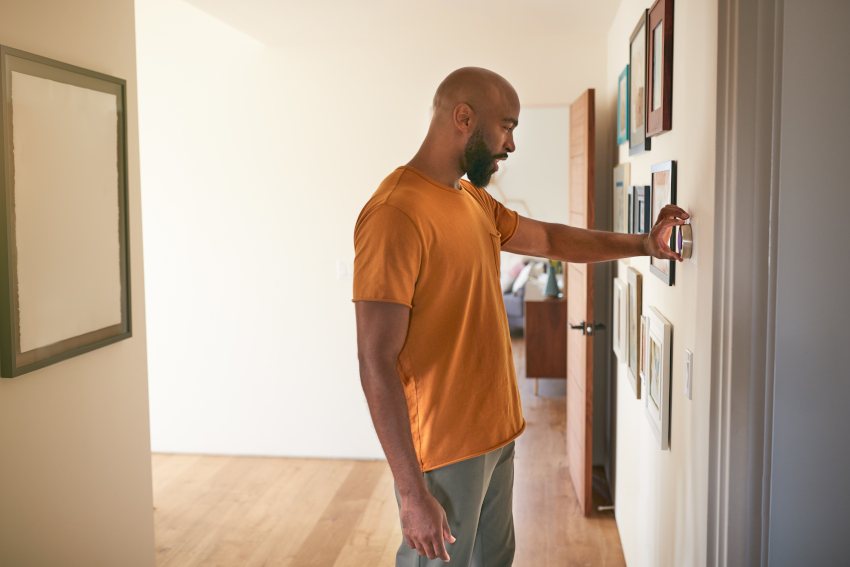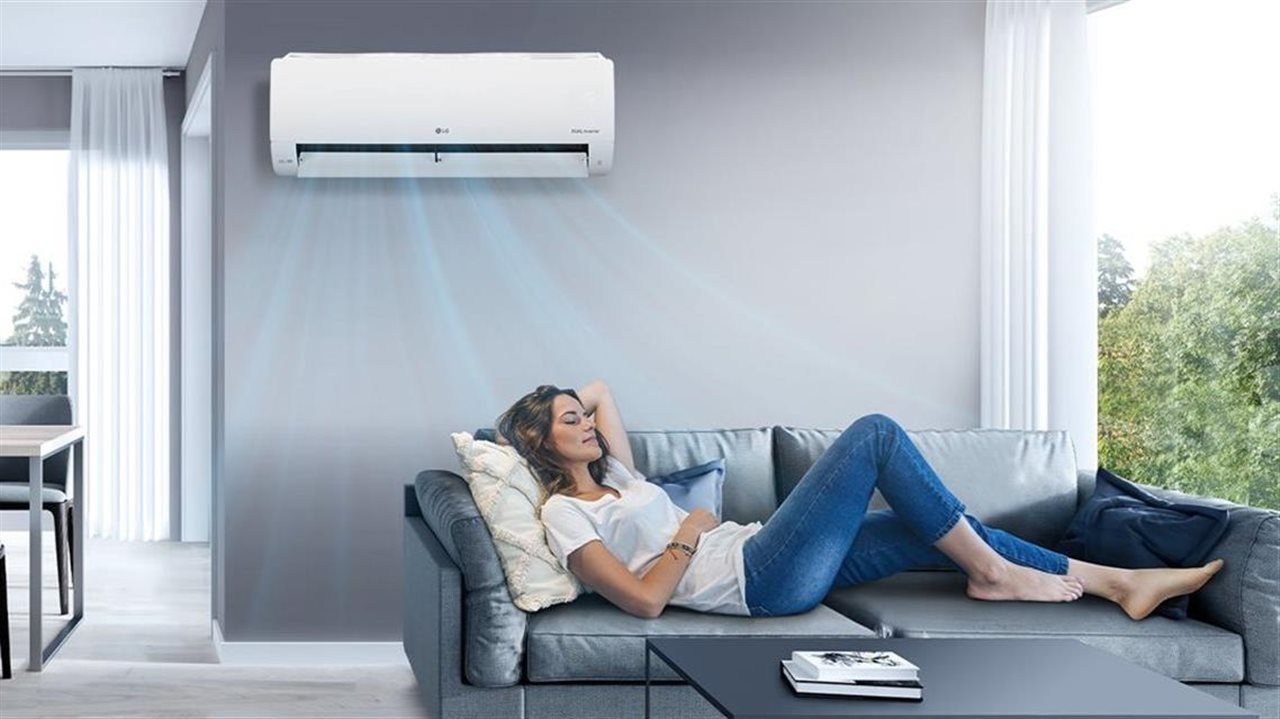You know the feeling. It’s the “Ahhh” moment when cool dry air greets you upon entering your home. Home is a refuge, especially when escaping hot humid air with temperatures in the 80s and 90’s. Let’s learn more about finding your A/C comfort zone.
We expect two feelings when it comes to air conditioning in our homes: relief and comfort.
We anticipate relief when entering our home, escaping the hot, muggy conditions outside, but we also unconsciously expect a constant comfortable temperature in our living spaces.
Thermostat Down, Costs Up
In the hotter months of summer, you may be inclined to turn the thermostat setting down to a temperature requiring your A/C to run almost constantly. You may feel good when it’s running, but you won’t feel good when your power bill arrives.
What IS the Right Temperature for my A/C in Summer?
The answer is two-fold.
- It’s the temperature that feels comfortable to you.
- It’s the temperature that is cost-efficient.
How can you find an A/C temperature which keeps your home comfortably cool without burning up your budget? Here are some things to consider.
A Comforting Fact?
Each degree you raise the thermostat can save 3–5% on air conditioning costs. Wow! Raising your thermostat from 74° F to 78° F can save you up to 20% on your bill in the hottest months!
What Is Your A/C Comfort Zone?
Most families have a relative who always carries a sweater. Others have that uncle whom we wish would put on his shirt. The point is people can have different comfort levels in the same environment.
Comfort zone—we want to base it on science, but it is somewhat subjective when you speak about a “comfortable” temperature. Toss in the humidity factor and the term comfort becomes complex. In Arizona, 80 degrees can feel pleasant, but in Connecticut, it can feel downright sticky.
What Can You Do?
There are several things homeowners can do to keep their cool and preserve their bottom line.
Check your Thermostat Accuracy
Not all thermostats are calibrated accurately—some may be off by one or two degrees. Use a second thermometer next to your thermostat to confirm accuracy. If your thermostat reads 78°, but it’s actually 80°, you may be trying to tolerate an inaccurate temperature.
Consider the Energy Star Recommendation
Energy Star is the US government energy rating program that helps consumers save money and protect our environment with energy-efficient products and practices. Energy Star recommends running your air conditioner at no lower than 78° Fahrenheit (25.5 C) to maximum your home’s energy efficiency, which of course leads to lower electricity consumption and cost.
Why 78°? It’s very close to the national average high temperature for the month of May. Many people describe that temperature as a pleasant spring day.
A Practical Experiment
Try adjusting the temperature in your home up 1° and live in it for 3 days. If you feel like it is tolerable, increase the temperature again 1° more and try it for 3 days. You get the idea. Experiment for several days as you and your family go about your regular activities with the goal to get to 78°.
It’s likely the initial 1° change will go unnoticed. The next 1° increase may feel warmer than usual, but you’d be surprised at how quickly your body can adapt to a new constant temperature.
How comfortable are you? Could you live with turning up the A/C a few more degrees?
Work With Your A/C
If you find it difficult to live comfortably with an indoor temperature of 78° before you lower the thermostat setting there are a few practical things you can do.
- Assess your insulation factor. Proper insulation benefits you in summer and winter alike by limiting the amount of outside air that gets into the house.
- Use shades on windows that get a lot of sun by installing blinds or heavy drapes. Blocking direct sunlight into the interior space significantly reduces interior temperatures.
- Team up with your AC system by using an electric fan or two (preferably ceiling mounted). Fans are low-energy devices which circulate the chilled air and ceiling fans draw hot air upwards, which leaves you feeling cooler.
A note about fans:
- Fans don’t decrease the temperature in your home. Fans help circulate the air (whatever the air temperature) throughout your home.
- Fans do make you feel cooler. The fan moves air across your skin evaporating the moisture on your skin. You feel cooler, but the temperature is the same. That’s why fans are such an energy efficient solution.
Use A Programmable Thermostat
Programmable thermostats come with several settings (usually Wake Up, Leave, Return, and Sleep) which allow you to select different temperatures at various times of the day. The air conditioner will function efficiently and dehumidify effectively when you’re at home and awake. It will conserve energy during your work hours and while sleeping at night (when temperatures drop outside).
So What’s the Best Temperature for My A/C?
Simple answer: It’s the comfortable temperature you can comfortably afford.
Take Care of Your Cooling System
Ensure your A/C is running optimally, by scheduling regular maintenance. Here are the essentials that need attention so your system is efficient:
- Replace the filter once a month in the spring and summer
- Have the system checked annually to ensure it is running safely and efficiently
- If your system is more than 10 years old, it may be time to replace it with a more energy-efficient model.
Total Mechanical Systems is ready to help you enjoy cool air in your home in the summer while going easy on your wallet. Call us with any service or maintenance needs at 860-419-COOL (2665) or contact us HERE.
We’ll never recommend unnecessary work on your air conditioning system. Our business is built on relationships, not repairs. Find your A/C comfort zone and SAVE with Total Mechanical Systems!
Source: https://aceairfl.com/its-hot-whats-the-best-temperature-setting-for-my-a-c-in-summer/





